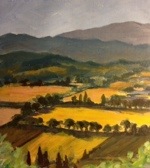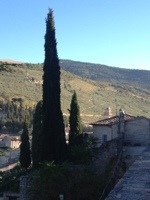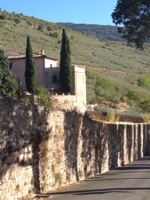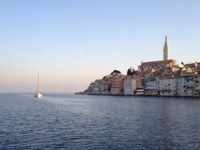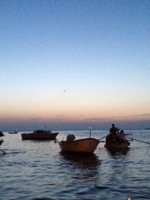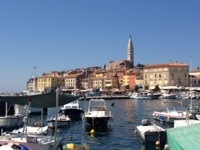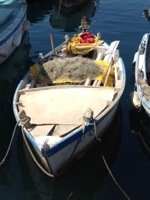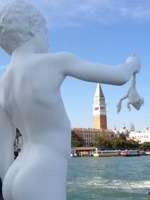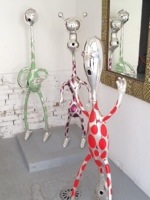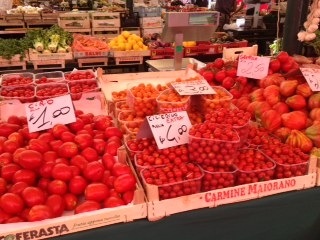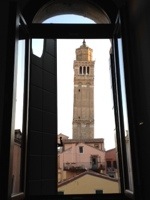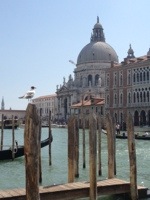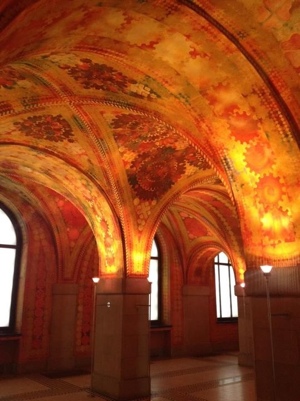After refilling the well on the Istrian coast of Croatia, I returned to Italy, to the familiar and beloved hills of Umbria. I spent a summer here two years ago and the country mouse in me was ready to reconnect to the farmland and medieval hill towns. Although neighboring Tuscany gets all the glitz and glory, thanks in big part to a certain book and movie, it is Umbria that has heart.
Actually, I haven’t traveled here enough nor will in my lifetime for this undiscriminating eye to appreciate the idiosyncrasies that make these two regions differ. If you are drawn to the ochre and green fields that form a quilt of hay, olives and grapes against the lavender hills and deep green cypress trees, then you’ll love Umbria. If you marvel at the charms of Cortona, Montepulciano, Siena and the granddaddy Firenze (Florence), then you’ll want to visit Orvieto, Spoleto, Assisi and the little daddy, Perugia.
My home for two weeks is Spello, sitting on a hilltop just south of Assisi. This is small town Italian living. I pass the corner gelateria each morning on my way to my daily hike. The locals are drinking espresso, playing cards, wondering who this American is bopping about. There are several family-owned markets, enotecas with their stacked shelves of wine, art galleries, tourist shops selling the pottery this area is known for, and a selection of cafes with spectacular views to the valley below. I see Assisi with its Basilica honoring St. Francis gleaming in the sunlight.
As I venture through the maze of archways and alleys, past churches and houses, I see centuries of history in the limestone and brick. There is an amazing contrast once you step outside any of the Roman “gates” that mark the entrance to Spello as the realities of modern life begin here. I walked to the SuperConti, a mini Walmart of sorts the other day. It was amazing how quickly I was sucked back into the lure and convenience of prepackaged food and all-in-one shopping. As I worked my way back to my apartment in the old city center, the sky opened up in a much needed glorious rain storm. I ducked into a pizzeria to wait it out. For just a millisecond, I felt a frustration that I couldn’t jump in my car and drive home,
And then I remembered, that is not why I was here. I don’t need a car, I don’t need prepackaged food, or prepackaged anything for that matter. If for only two weeks, all I need are the hills.
